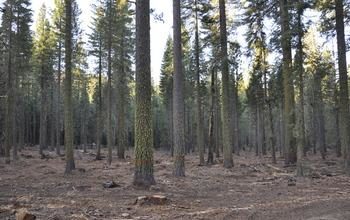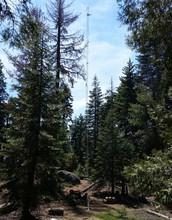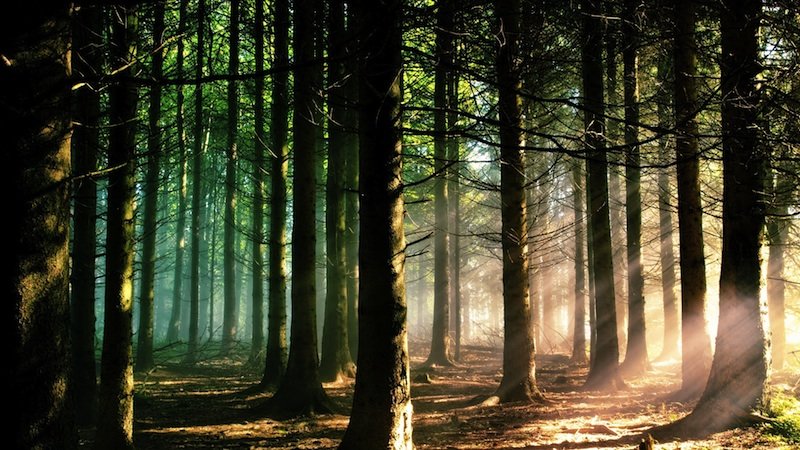That may come as a surprise to those who see dense, verdant forests as signs of a healthy environment. After all, green is good, right? Not necessarily. When it comes to the number of trees in California forests, bigger isn't always better.
That's in part because trees use lots of water to carry out basic biological tasks. In addition, they act as forest steam stacks, raking up water stored in the ground and expelling it as vapor into the atmosphere, where it's accessible to humans and forest ecosystems only when it falls back to Earth as rain and snow.

New research published this week in the journal Ecohydrology shows that water loss from evapotranspiration has decreased significantly over the past three decades. That's due in large part to wildfire-driven forest thinning - a finding with important implications for forest and water management.
A century of forest management had kept wildfires to a minimum. But without fire, Sierra forests grew very dense. In recent decades, new policies have allowed nature to take its course, with wildfires helping to thin out overgrown forests.
"Forest wildfires are often considered disasters," said Richard Yuretich, director of NSF's CZO program, which funded the research. "But fire is part of healthy forest ecosystems. By thinning out trees, fires can reduce water stress in forests and ease water shortages during droughts. And by reducing the water used by plants, more rainfall flows into rivers and accumulates in groundwater."

Forest thinning has increased in recent decades in an effort to stave off disastrous wildfires fueled by dense forests. This study shows that restoring forests through mechanical thinning or wildfire can also save California billions of gallons of water each year.
"The need for forest restoration is being driven largely by the need to lower the risk of high-intensity wildfires and restore forest health," said University of California Merced scientist Roger Bales, director of the Southern Sierra CZO and study co-author. "Downstream users who benefit from the increased water yield are an important potential revenue stream that can help offset some of the costs of restoration."Forested areas needing restoration are large, Bales said, but potential changes in water availability are significant. The total effect of wildfires over a 20-year period suggests that forest thinning could increase water flow from Sierra Nevada watersheds by as much as 10 percent.
The U.S. Forest Service says that 6 to 8 of the 21-million acres it manages in California need immediate restoration. Another 58 million acres nationally also require restoration. For California alone, restoration costs are estimated at $5 to $10 billion. But, according to the study authors, the restoration might help pay for itself.
"We've known for some time that managed forest fires are the only way to restore the majority of overstocked western forests and reduce the risk of catastrophic fires," said James Roche, a National Park Service hydrologist and lead author of the new study. "We can now add the potential benefit of increased water yield from these watersheds."




Reader Comments
I Think trees are inextricably involved in moderating the water table within the radius of their sphere of influence, in accordance with their vested interest.
These idiots ever heard of the Dust Bowl?
R.C.
My first rule of thumb when working as an engineer: Don't try to make a device that is working just fine work better, as in don't fix what works.